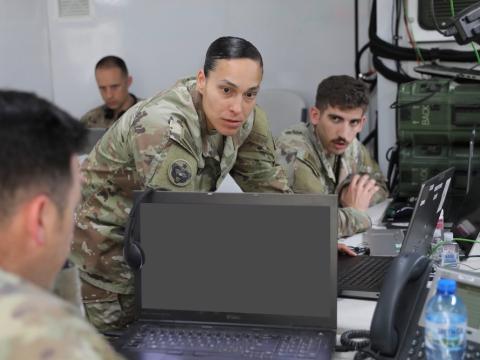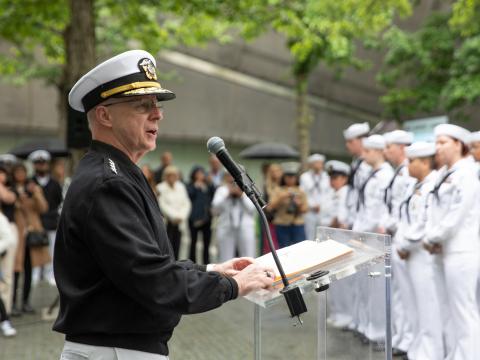 |
| Adm. Jonathan W. Greenert, USN, commander, U.S. Fleet Forces Command, gives the kickoff address at West 2009. |
Much remains to be done even though the U.S. Navy has reconstituted its fleet response plan to suit a new era in which is must do more in less time, said Adm. Jonathan W. Greenert, USN, commander of the U.S. Fleet Forces Command.
Operations tempo is up considerably. More ships are at sea at a given time than in past eras. And, new missions such as maritime security and ground operations are stressing that ops tempo and naval resources. These three challenges are changing the way the Navy operates.
Being able to carry out these new missions will require an "immersive training environment," the admiral said. He called for industry to provide high-fidelity simulation systems for training. He analogized that sailors today are training on Pac-Man systems, where what they really need is X-Box technology. The goal is to mimic sea operations as if they were real.
In a noteworthy point of view, Adm. Greenert described four realms in which the Navy must maintain control and situational awareness. In addition to surface, subsurface and air, cyberspace is an operational area that has requirements similar to the three physical realms. Concerns include training and interoperability.
In particular, interoperability is becoming more of an issue as capabilities increase along with diversity of partnerships. The U.S. Navy is conducting counter piracy efforts with a number of partner nations, but non-coalition members such as Chinese and Russian naval forces are exchanging information with these U.S. forces through nontraditional channels such as chat rooms.
Oil platform security also will increase in importance, Adm. Greenert predicted. He related that the U.S. Navy is protecting Iraqi offshore oil platforms with the Royal Navy, the Royal Australian Navy, the U.S. Coast Guard and Iraqi coastal protection forces.





Comments